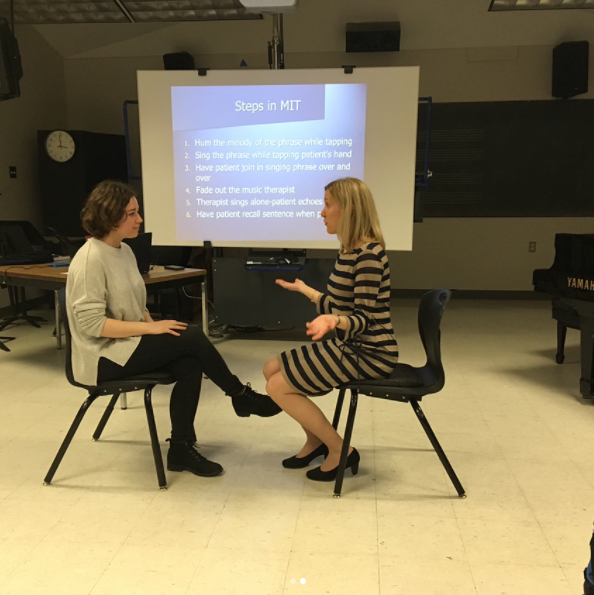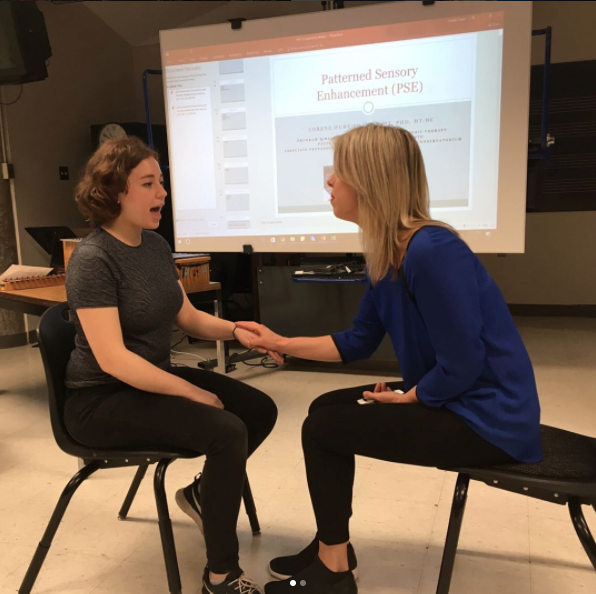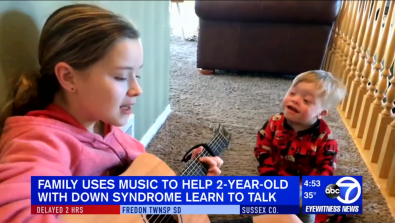This past month I attended a Neurologic Music Therapy training in Toronto, Canada.
I made my 8-hour car-ride journey up to Toronto already knowing what to expect; I would be in class from 8:30am to 5:30pm each evening, learning about techniques utilized in the field of NMT, and at the end of 4 days I would be a certified NMT; granting me the ability to use techniques and protocols founded in evidence-based research by the seemingly mythical Michael Thaut and his wife, Corene.
As a Music Therapist, I have come in contact with those who practice NMT, and have been introduced several times to each technique used. After my training at institute, I learned all 20 techniques that I can now incorporate into my practice. These 20 methods address different domains, including cognition, speech and language, and sensorimotor areas. All approaches were created by a handful of music therapists, including the incredible Corene and Michael Thaut. They pioneered this field through extensive research and conducting numerous studies. They define the field in this way:
“Neurologic music therapy (NMT) is the therapeutic application of music to cognitive, sensory, and motor dysfunctions that come from human neurologic diseases. NMT treatment is based on stimulating music perception and production in the human brain, and the effects thereof on nonmusical and behavior functions.”
Here’s a photo of me learning how to do Melodic Intonation Therapy (MIT); one of the first techniques I learned at Institute! This technique is used to rehabilitate those who have suffered a brain injury affecting their speech. Singing (paired with the rhythmic component of tapping your hand) is utilized to help those with Expressive Aphasia (those who have lost the ability to express speech after a brain injury) essentially re-learn how to speak again. “/> Here’s a photo of me learning how to do Melodic Intonation Therapy (MIT); one of the first techniques I learned at Institute! This technique is used to rehabilitate those who have suffered a brain injury affecting their speech. Singing (paired with the rhythmic component of tapping your hand) is utilized to help those with Expressive Aphasia (those who have lost the ability to express speech after a brain injury) essentially re-learn how to speak again.

Here is photo of me learning another technique, Patterned Sensory Enhancement (PSE) with Corene Thaut, which addresses sensory and motor goals utilizing the rhythmic and spatial elements of movement. “/> Here is photo of me learning another technique, Patterned Sensory Enhancement (PSE) with Corene Thaut, which addresses sensory and motor goals utilizing the rhythmic and spatial elements of movement.

Attending institute has helped me greatly in expanding the scope of my practice and better understand how to work with children and adults dealing with neurologic dysfunctions and neurodevelopmental disorders, such as those with autism, intellectual disabilities, and brain injuries.




